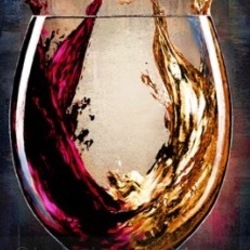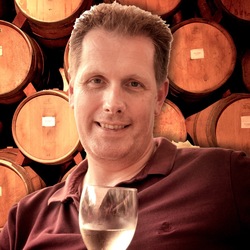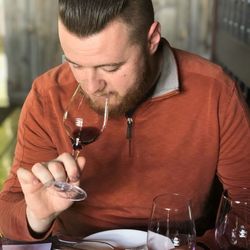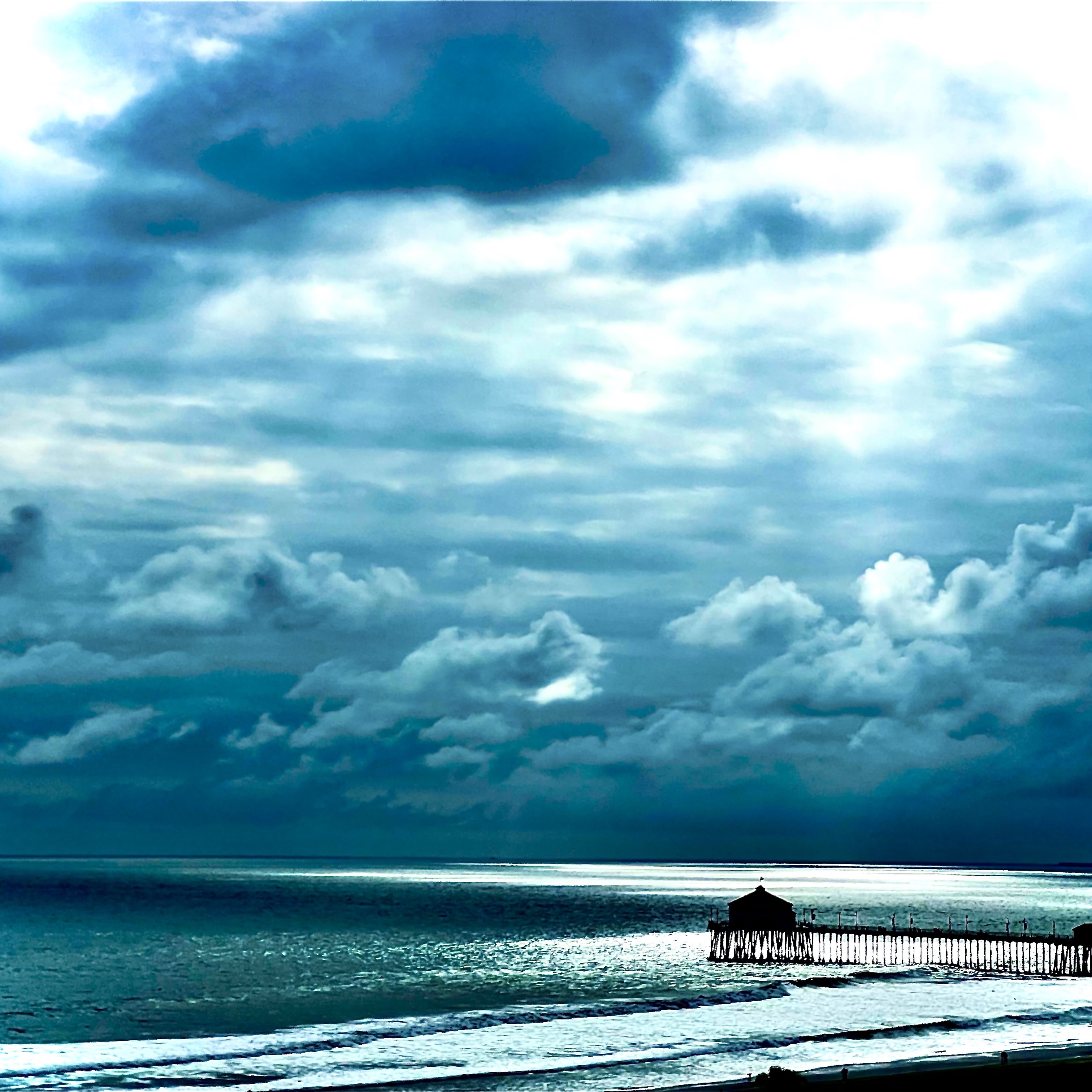Caves A St. Vallier S
Château Figeac
St. Émilion Red Bordeaux Blend 2015
I 💗 Figeac & as one of the top wines of 2015, that I paid £110 for but now £200+ as it’s a 98-100 pointer, I couldn’t wait to pop one 😊
This is drinking superb young & will indeed be a superstar 😍
🏵 96 points w/ 98+ potential
🍇 43% Cab S, 29% Merlot & 28% Cab F
🍷 Opaque deep purple ruby
👃 Heady deep rich blackcurrant & dark plum w/ soft oak, red liquorice, cocoa cream butter, rock minerals, minty herbs & soggy earth - Bordeaux nasal sex
👄 Med+ body of silky creamy plump oozy blackcurrant & dark bursting plums through cocoa, violets & minerals w/ a touch of raspberry liquorice
🎯 Long mineral infused, touch dry, black fruit bomb w/ a cocoa tickle — 8 years ago

Château Lafon-Rochet
Saint-Estèphe Cabernet Sauvignon Blend 1995
A fab £56 St Estephe showing how well they can age but boy this is an oak dominatrix in an oak bondage orgy 😁 only for oak lovers 😉 I still enjoyed it 👍
🏵 92 points
🍇 40% Cab S & 60% Merlot
🍷 Opaque ruby
👃 Rich oak driven smothered dark fruits that drown out any other nuance aromas but some sooty smoke creeps through
👄 Med silky smooth body of oaky dark berries w/ a liquorice & mocha touch
🎯 Med+ liquorice & mocha dark fruits w/ dry oak dominating — 8 years ago
Hubert Lamy
En Remilly Saint-Aubin 1er Cru Chardonnay 2010
I bought my first vintage from this producer & terroir beginning with the 2010 vintage and what a vintage to start. I bought four bottles for right around $50 or a little less. They were so amazing, I drank through them in no time at all. For those of you that read my posts, that’s not normally what I do. I like to drink one & age the rest. Since then, I have looked & looked for more. I’d finally given up hopes of finding more until recently I struck gold. I should have bought all nine bottles but a calmer head prevailed. It’s definitely changed since having it fresh. On the nose, the fruits are slightly macerated. Heather honey, beeswax, golden & green apple, pineapple upside down cake, slight orange citrus blend, mango, glazed nuts, soft, delicate, chalky minerals, a touch of jasmine & yellow lilies. The body is much rounder & thicker than when it was young. Waxy. So, beautifully layered across the palate. Much of the palate matches the nose. Heather honey, beeswax, golden & green apple, apricots, peach, pineapple upside down cake, slight orange citrus blend, mango, slight molasses character & glazed nuts with citrus blossoms, yellow lilies & jasmine. The minerals are much more grippy & bold as they cut across and set on the palate. The acidity round & phat. The texture is amazing as is the length, balance & beautiful, rich, long finish that lasts two-minutes plus. So glad I found more of this wine! Hubert Lamy seriously over deliver the terroir & the price point by a country mile. If you are not buying this wine on pre-arrival, you are missing great wine and excellent value. Can’t say enough good things about it. Especially, the 2010. I expect the 15 to hold similar quality. Photos of; Olivier Lamy, Olivier working in this vineyard, barrel room and their Criots-Bâtard-Montrachet Vineyard. Producer notes and history...There have been Lamy’ s growing vines in St-Aubin since 1640, today it is run by Olivier Lamy. Olivier is a new breed of Burgundian grower keen to progress. He trained Méo-Camuzet & made a number of vintages before taking over in 1996 from his father Hubert. Hubert Lamy used to sell fruit to négociants, but that stopped in 1997. He grubbed up and sold off peripheral vines, keeping only the best and oldest sites. Currently he is experimenting with different planting densities in a quest to capture even greater expression of terroir. The Domaine produces both reds and whites and now has 16.5 hectares of vineyards, mostly in St-Aubin but also own a few parcels in Chassagne-Montrachet and a tiny plot in the Grand Cru Criots-Bâtard-Montrachet. Yields are kept low and recent innovations have been introduced with selection tables in the cuverie to ensure that only the healthiest and ripest grapes are used. His more recent move to reduce the amount of new oak with the introduction of demi-muids 300-600 liter barrels have also helped to improve the wines. Vinification is traditional and the wines are matured with only 20-30% new oak for 12 months before minimal filtration and then bottling. The quality is very high and is often superior to many wines from much more prominent villages that sell at twice the price or more. — 8 years ago
Château Phélan Ségur
Saint-Estèphe Red Bordeaux Blend 2010
🎅 Advent 📆 Day 0️⃣9️⃣
Santa’s on a roll with another top year in one of my favourite St Estephes @ £37 for a halfy 👍 this is a great 91-92 now but will age to 94-95 easy 😉
🍇 51% Cab S & 49% Mer
🍷 Opaque deep ruby
👃 Dark morello cherry, damson, spiced blackcurrant & blackberry through light smoked oak w/ violet, earth, mineral & cocoa tones
👄 Med creamy silky body of plump blackcurrant & dark plum in chocolate w/ a hint of liquorice
🎯 Long dark fruit & mocha linger — 8 years ago

Domaine Amiot Guy et Fils
Les Macherelles Chassagne-Montrachet 1er Cru Chardonnay 2011
On the nose; flint/sulfur, cut dry grass, green apple, lemon, lime, notes of overripe pineapple, honeysuckle, green herbs Jasmine and yellow lilies. On the palate; green apple, lemon, lime, overripe pineapple, green dry herbs, flint/sulfur, honeysuckle, Jasmine & yellow lilies, grainy minerals, good chalkiness, saline, nice round acidity and round, rich, long finish. Photos of; Domaine Guy Amoit et Fils, their barrel cellar and Guy & Thierry Amiot and a picturesque shot in Chassagne-Montrachet. Producer notes and history...Domaine Amiot was founded in Chassagne-Montrachet in 1920 by Arsene Amiot when he acquired select parcels of vines or “climats” in Chassagne including Vergers, Caillerets, Clos St. Jean and in what is today Le Montrachet. Under Arsene, Domaine Amiot became one of the first Domaines in Burgundy to bottle their own production. In the 1930’s, the domaine passed to Aresene’s son, Pierre, who continued to add top sites such as Champsgains, Macherelles, Maltroie and their tiny parcel in Puligny, Les Demoiselles. Pierre’s son, Guy, took the reins in 1985 and solidified the reputation of the Domaine for producing wines of exceptional quality from an impressive array of top vineyard sites. Guy’s son Thierry took over the winemaking in 2003 and continues the tradition of expressing the unique character of each vineyard site while constantly seeking to improve the quality of the wines. Les Macherelles is located on the farest side of Chassagne-Montrachet close to Puligny-Montrachet. — 8 years ago
Caves Arnozan
Réserve des Chartrons Lussac Saint-Emilion Red Bordeaux Blend 2014
Excellent rich, deep, robust red wine. Have on a cold night with some steak or pot roast. — 7 years ago
Clos de l'Oratoire des Papes
Comtes de Neipperg St. Émilion Red Bordeaux Blend 2014
Beautiful example of top class grand cru St. Emilion - 2014 was a decent year with a good spring, but fairly humid and grey in the summer with more rainfall than normal, and more than the left bank areas saw. Given clay isn't very free draining, the areas that had more sand and gravel drained a little better resulting in great Cabernet Franc, and decent Merlot. That being said, the wine from this estate is beautiful, fleshy, and supple, with acidity and slightly grippy tannins that will help this wine to continue aging. Black plummy fruits, cherry reduction, bell pepper, tobacco, purple flower florals. 90% Merlot, and 10% Cabernet Franc, aged in new oak barrels 50% on lees for 17 months, and no fining. This is a great value to have in the cellar, especially if you secured any 2015's that absolutely will need time, these can be opened now but aged for several more years. — 7 years ago
Domaine Armand Rousseau
Clos St. Jacques Gevrey-Chambertin 1er Cru Pinot Noir 2011
2011 Clos St. Jacques Gevrey-Chambertin. Dinner w A&S. Didn’t decant and it was great, but next time, definitely note to decant. — 8 years ago
Château Brane-Cantenac
Grand Cru Classé en 1855 Margaux Red Bordeaux Blend 2005
I have a six-pack of this 05. I thought after 10 years in bottle, it would be interesting to check in on its evolution. While tasty, I’ll wait another 8-10 to open another. Even after 2-3 hours in the decanter, it’s still a very young adolescent. On the nose, slightly sour blackberries & dark cherries, dark currants, baked black plum, haunting blue fruits, anise, whiff of spice, steeped tea, dry stones, dry crushed rocks with dry top soil, caramel, vanilla with fresh & dry red florals. The body is thick & full. Tannins are starting to round out. It’s velvety on the palate. The fruits are; bright, fresh & ripe and really show the greatness of the 05 vintage. Dark currants, blackberries, dark cherries, baked black plum, haunting blue fruits, baked strawberries, cherries, raspberries on the long set, dark spice, clay & loamy dry top soil with crushed rocks, dry stones, cigar with ash, graphite, dry stems, slight herbaceous character, mint, used leather, clove, caramel, vanilla, fresh & dry red florals with violets. The round acidity is about perfect. The structure and length are still strong. The balance is in harmony. As for the long finish, it’s lush, ruby, rich and well polished. Photos of; Chateau Brane Cantenac, large wood vats, Henri Lurton and Estate vines. Producer notes and history...Chateau Brane Cantenac began in the early 17th century. At the time, the estate was known as Domaine Guilhem Hosten. Even that far back, wine was produced from the property. In fact, the wine was so highly regarded it was one of the more expensive wines in Bordeaux. It sold for almost as much money as Brane Mouton. This is interesting because of who went on to buy the vineyard in the 1800’s. The Baron of Brane, also known as “Napoleon of the Vineyards”, purchased the Chateau in 1833. At the time of the sale, the estate was called Chateau Gorce-Guy. To get the funds needed to purchase the Margaux vineyard, the Baron sold what is now called Mouton Rothschild, which was at the time of the sale, known as Chateau Brane-Mouton. Not such a good move with hundreds of years in hindsight! In 1838, the Baron renamed property taking his name and the name of the sector where the vineyards were located and called it Chateau Brane Cantenac. The Chateau later passed to the Roy family, who were well-known in the Margaux appellation in those days, as they owned Chateau d’issan. Moving ahead to 1920, the Societe des Grands Crus de France, a group of merchants and growers that owned several chateaux located in the Medoc including; Chateau Margaux, Chateau Giscours, and Chateau Lagrange in St. Julien, purchased Chateau Brane Cantenac. Five years later, M. Recapet and his son-in-law, François Lurton, took over Brane Cantenac along with Chateau Margaux. Lucien Lurton (the son of François Lurton) inherited Brane Cantenac in 1956. Today, the estate is still in the hands of the Lurton family. Brane Cantenac is owned and run by Henri Lurton. After being given the responsibility of managing Brane Cantenac, it was under the direction of Henri Lurton that large portions of the vineyard were replanted. Vine densities were increased, the drainage systems were improved and the plantings were also, slowly changed. The vineyard of Brane Cantenac is planted to 55% Cabernet Sauvignon, 40% Merlot, 4.5% Cabernet Franc and .5% Carmenere. Carmenere was used for the first time in the 2011 vintage. The only other Chateau I know that still uses Carmenere is Clerc Milon. The 75 hectare Left Bank vineyard of Brane Cantenac is essentially unchanged since it earned Second Growth status in the 1855 Classification. At least that is the case with the 45 hectares used to produce the Grand Vin of Brane Cantenac. Those 45 hectares are planted surrounding the Chateau. Those vines are located just in front of the Cantenac plateau and are the best terroir that Brane Cantenac owns. They have other parcels, which are further inland and much of those grapes are placed into their second wine, Le Baron de Brane. Those additional hectares can be divided into 3 main sections. Behind the Chateau, they have 15 hectares of vines on gravel and sand, 10 hectares across the road with sand, gravel and iron and a 13 hectare parcel with gravel called Notton, which is used for their second wine. The vineyard is planted to a vine density that ranges from 6,666 vines per hectare on the plateau and up to 8,000 vines per hectare for the vines located behind chateau, in their sandier soils. The higher levels of vine density are always found in the newer plantings. The terroir of Brane Cantenac consists of deep gravel, sand and clay soil. Experiments in the vineyards are currently looking at becoming more organic in their vineyard management. Today, more than 25% of Brane Cantenac is farmed using organic farming techniques. It is expected that over time, the amount of hectares farmed with organic methods will be increased. Brane Cantenac has gone through 2 relatively recent modernization’s in 1999, when they added began adding the first of their smaller vats to allow for parcel by parcel vinification and then again in 2015 when they completed a much more complete renovation of their cellars and vat rooms. While Brane Cantenac is a traditional producer, they are no stranger to technology as they were one of the first estates to embrace optical grape sorting machines. In very wet vintages, they can also use reverse osmosis. To produce the wine of Chateau Brane Cantenac, the wine is vinified in a combination of temperature controlled, traditional, 22 oak vats, 18 concrete tanks and 20 stainless steel vats that vary in size from 40 hectoliters all the way up to 200 hectoliters, which allows for parcel by parcel vinification. 40% of the fermentation takes place in the oak vats. The oldest vines are vinified in vats that are selected to allow for separate parcel by parcel vinification. The younger vines are vinified more often together in the same vats. However, the Carmenere is entirely micro-vinified, meaning that those grapes were completely vinified in barrel, using micro-vinification techniques. This can also happen because the amount of grapes produced is so small. Some vats can be co-inoculated, meaning they go through alcoholic fermentation and malolactic fermentation simultaneously. At Chateau Brane Cantenac, malolactic fermentation takes place in a combination of French oak tanks and barrels. The wine of Brane Cantenac is aged in an average of 60% new, French oak barrels for 18 months before bottling. The initial 2 months of aging is done with the wine on its lees, which adds more depth to the wine. There second wine is Le Baron de Brane. Le Baron de Brane is not new. In fact, previously, the second wine went under the name of Chateau Notton, which took its name from one of the main parcels where the grapes were planted. During the late 1950’s and into the 1960’s, having a second wine was important as the estate declassified 3 vintages, due to extremely poor, weather conditions in 1956, 1960 and 1963. Production of Chateau Brane Cantenac is about 11,000 cases per year. — 8 years ago

Château La Croix St. Georges
Pomerol Red Bordeaux Blend 1990
A review of 9️⃣’s for fun 😁
The 2009 was made 9 years ago @ £39 & 19 years after the 1990 @ €90 😁 so I thought it would be fun to compare how my favourite Pomerol has evolved 😁
💵 Oh & Petrus next door to this Chateau is 90 times more expensive 🤣
🥊 So 90 vs 09
🏵 90 - 97-98 points
🏵 09 - 94-95 points
🍷 90 - Garnet opaque ruby w/ bricking
🍷 09 - Opaque ruby
⏩ scroll for colour pics on Instagram ⏩
👃 90 - Bordeaux nasal sex of soggy earth, sooty underground 🚇, char-smoked oak, old leather, damp musty cellar, mushroom, mirabelle plums, damson compote, obliterated blackcurrant, herbs, toasted fig, bitter mocha & liquorice
👃 09 - Dark jammy plum & blackcurrant through smokey oak, choc mocha, flint, pencil lead, soggy earthy leaves & wet rock minerals
👄 90 - Med body of creamy earthy smooth silk dark plum & berry bathed in ground mocha & liquorice
👄 09 - Med+ creamy smooth ripe dark plum & blackcurrant body w/ a mocha infusion & mineral tone
🎯 90 - Long mocha liquorice dark fruits mouth filling linger w/ a big happy smile 😃
🎯 09 - Long smooth ripe dark fruit, minerals & rich mocha linger - oh & still big happy smile 😀
⏰ 09 I can’t wait to revisit you in 19 years 😘
👏 @josephjanoueix @jeanphilippejanoueix 😍
— 7 years ago
Château Léoville Barton
Saint-Julien Red Bordeaux Blend 2001
The 2001 Barton @ £67 is in a lovely place right now - any Barton fan (I’m one 😉) will love this chewy mouthful of alluring nasal sensual tease 😉
🏵 93-4 points
🍇 70% Cab S, 20% Merlot & 10% Cab F
🍷 Opaque ruby
👃 Char smoked oak, liquorice, mocha, minerals, flint, pencil lead, gravel, tar, soggy earth & leaves through blackcurrant & dark plum w/ herbs
👄 Med body of silky smooth mocha loaded ripe dark currant/berry & plum fruits w/ a mineral loaded backbone & liquorice tones
🎯 Med+ earthy dark fruit, mocha, liquorice & mineral boom 💥& a touch of dryness
— 8 years ago
Château Meyney
Saint-Estèphe Cabernet Sauvignon Blend 2015
Drinking easy now but should be epic in 10+ yrs - amazing value for money @ £24
🍇 60% Cab S & 40% Mer
🍷 Opaque ruby
👃 Crushed gravel mineral through fresh blackberry, chocolate mint & soggy earth w/ dark plums & light smoked oak
👄 Med body of very fruity dark berries & damson w/ a touch of raspberry liquorice & creamy milky chocky mocha w/ touch dry minerals
🎯 Med dry earthy mocha dark berry blackcurrant driven purple plummy fruit burst w/ morello choc dipped cherry — 8 years ago
Realm Cellars
Beckstoffer Dr. Crane Vineyard Cabernet Sauvignon 2012
12’ Realm Beckstoffer Dr Crane. Color- Inky dark purple. This wine jumps out of the glass ( Holy S%#t ) Blueberry pie, blackberries, smokiness, dare I say a bit of earthiness to it. Sexy,complexed & incredibly delicious. WOW! Drinking now with 15 great years in it. — 8 years ago


Château Fleur Cardinale
Grand Cru Classé Saint-Émilion Red Bordeaux Blend 2005
On the nose, bright, lean, ripe cherries, dark cherries, strawberries, cranberries, pomegranate juice, vanilla, cinnamon, very light spice, wood shavings, loamy soils, dry stones, and bright red fragrant florals. The mouthfeel is lean for Bordeaux. The tannins are lighter than dusty...so resolved. You can tell this is 70% Merlot & 20% Cab Franc as the cherries are singing in harmony better than the group America on the album "Horse with No Name" or for you kids "Fifth Harmony." The rest of the fruits are equally amazing, bright, lean, ripe; cherries, dark cherries, strawberries, cranberries & pomegranate juice. Vanilla, cinnamon, very light spice, wood shavings, loamy clay soils, dry, crushed, fine powdery rocks, dry stones & bright red roses/florals. This wine is pictured in the dictionary under pure elegance. The soft, round, acidity pours over the palate. The fruit driven finish goes on and on. I'm not sure this is going to continue to improve. I think it has about 5 years of good drinking left. Producer notes...Chateau Fleur Cardinale was purchased by Dominique and Florence Decoster in 2001. Prior to buying their first Bordeaux wine estate, they were in the fine porcelain and China business in the Limoges region of France. Chateau Fleur Cardinale is located next door to Valandraud & Rol Valentin & near Chateau Faugeres. Fleur Cardinale takes its name from the myriad of roses and other flowers that are planted around the estate. The 24.5-hectare St. Emilion vineyard of Fleur Cardinale is planted to 70% Merlot, 15% Cabernet Sauvignon and 15% Cabernet Franc. The oldest Merlot vines are 60 years old and vineyard average is 40 years. The soils of their terroir are clay over limestone. Since 2013, the vineyard is farmed using organic, self-sustainable techniques. For the vinification, the juice undergoes a cold maceration at 5 degrees Celsius for 5 or 6 days. This is followed by alcoholic fermentation and a warm maceration for 2 to 3 weeks. All the pumping over is done by gravity, which avoids stirring the musts and stressing the yeasts. Chateau Fleur Cardinale is best paired with all types of classic meat dishes, veal, pork, beef, lamb, duck, game, roast chicken, roasted, braised and grilled dishes. It is also good paired with Asian dishes, rich fish courses like tuna, mushrooms and pasta. Photos of, the Chateau and estate vines, beautiful fruit waiting to be delivered to the Chateau and pressed, the gate entrance and barrel room. The 05 vintage is as beautiful as advertised and drinking better than the 2000's I've had in the last two years. This 05 is a steal for just under $50 when I purchased it in 2007.
#SteakandClaretNight — 8 years ago
















Ron Siegel
Still youthful with beautiful aromatics showing a nose of red berry, cassis, earth, barnyard, leather, lead pencil, leather & tobacco. One of the better 94’s — 7 years ago